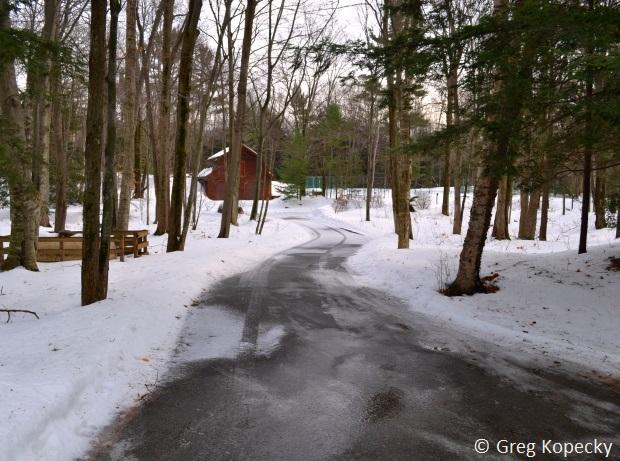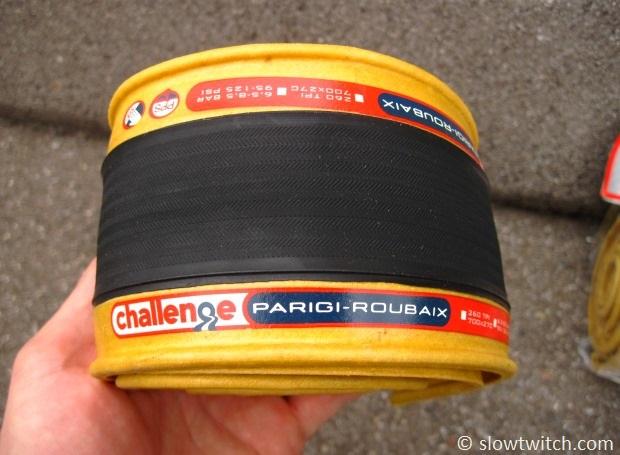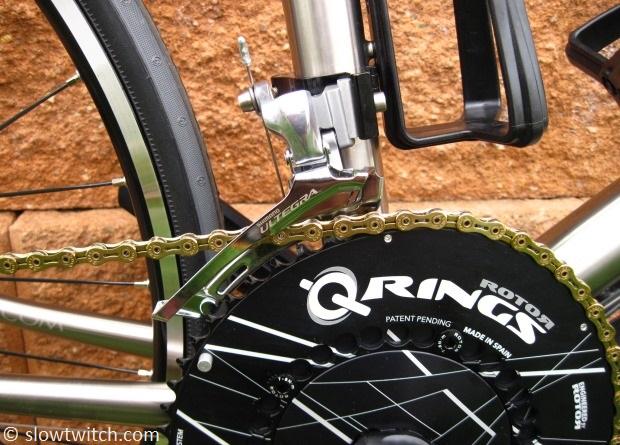Your ideal winter kit – 2
For Part 1 of this article, click HERE.
Many of us are still in the depths of winter. I live in Michigan, and (thankfully), the temperatures are just starting to creep up. After an 8-week stretch of ridiculously cold weather, we can finally start to emerge from our caves for a little more outdoor training. Just yesterday, we had white-out snow conditions for an hour in the morning, but a rather mild afternoon with drying roads.
With variability in conditions, how do you prepare? Clothing is an obvious one: Wear less as it gets warmer, but always bring a spare jacket just in case. The rest of your bike gear isn’t always crystal clear, so we’ll cover some of the high points on what you ought to consider.
Bike choice
What is the proper style of bike for winter riding? This entirely depends on the weather. While some people that live in warm climates can train on a skinny-tire triathlon bike 365 days a year, those of us with considerable snow cannot do so.
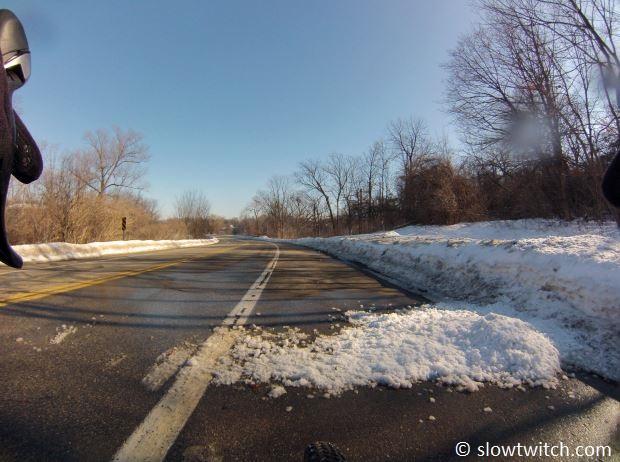
My favorite two tools for winter riding are 1) my cyclocross bike, and 2) my big-boy fat bike. I can get away with the ‘cross bike for riding when the roads are wet or lightly snow covered, but not deep snow. I use the full-fledged Fatty for deep powder.
What about a standard mountain bike? While some riders use mountain bikes, they’re not my favorite. The biggest reason is that when conditions get very cold, seals in the suspension system can blow out and fail (I’ve seen it happen more than once). While a standard 2.1 – 2.4 inch mountain tire is slightly more capable in snow than a 35mm cyclocross tire, they are nowhere close to fat bikes’ 4 – 5 inch tires and super wide rims. If it’s bad enough outside that my ‘cross bike won’t cut it, I go right for the fat bike.
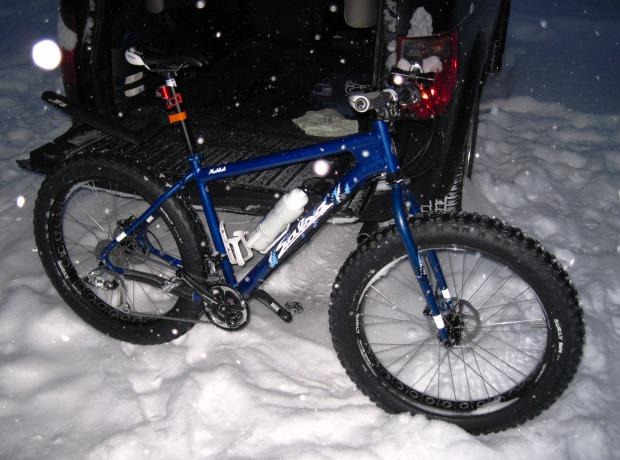
What about road bikes? Are they any better for winter riding than triathlon bikes? They can be slightly better, assuming your bike has room for 27 or 28mm tires (which almost no tri bikes have room for). This won’t get you through any substantial snow, but can offer a small measure of safety for an unexpected patch of slippery pavement. This is also why I always recommend that triathletes heavily consider a CX bike as a second bike, instead of a road bike. You can always put skinny tires on the cyclocross bike and ride it for road training in the summer, but you can’t fit fat tires in a standard road bike.
Tire choice
The most important thing I’ve found with winter tire choice is – when in doubt – go wide. I generally put the widest tire in the bike that will fit with acceptable clearance to the brakes, chainstays, seat tube, and seat stays. ‘Acceptable’ can mean different things to different people, but I generally consider 4-5mm of clearance to be a decent starting place. Less clearance might ‘work’, but you’re at higher risk for a tire rubbing your frame, or a foreign object getting stuck between the tire and frame.
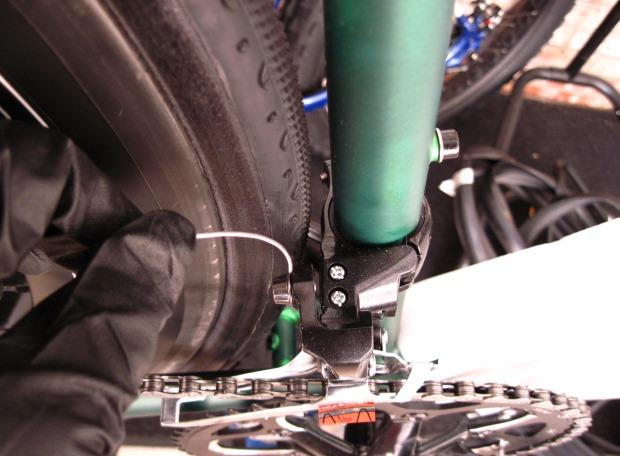
My ‘cross bike can handle 40-42mm tires, while my road bike is limited to about 30mm. My big ‘fat bike’ fits the latest 5-inch tires on the front wheel, but only 4-inchers on the back (unless I want to invest in significant modification… which I don’t).
I generally err on the more aggressive side for tires on all bikes in the winter. Cold weather means that it’s going to take me a lot longer to get dressed, and guarantees that I’ll spend at least a little bit of time wiping the bike off after the ride. As such, I’m not interested in making ‘game-day’ tire changes that will reduce my available riding time. I’d rather roll a little bit slower on a dry day than waste time switching to a faster tire.
For the bulk of winter, my tires will look something like this:
Fat bike: 4.8 front, 3.8-inch rear, aggressive tread (e.g. Surly ‘Nate’ or similar)
Cyclocross bike: 35 or 40mm studded winter tires
Road bike: 30mm file tread tires, such as the Challenge Almanzo or Specialized Roubaix Pro
Studded tires, pictured below, are available from brands such as Kenda, Suomi (formerly Nokian), Continental, and others.
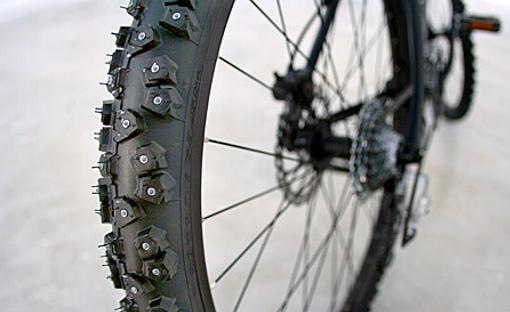
If I’m not sure of the road conditions, I always pick one bike ‘slower’ than I think I need. If it ends up being nice, I’ll pick the next-faster bike on the next ride (assuming there are no weather changes in the meantime). When the weather starts to consistently get warmer, I’ll put non-studded tires on the cyclocross bike, but keep everything else the same. It’s not unheard of to get a random snow day in April or May.
Other Essentials
One easy way to make your winter riding experience more pleasant is to add some sort of fenders to the bike. Some touring and cyclocross bikes accommodate full-length fenders, and these are the best choice for staying as dry as possible. They don’t look cool, but, well – get over it.
If your bike does not have fender capability, a clip-on fender is the next best thing. You can find inexpensive models that mount right to your seatpost, and do a nice job of keeping road spray off of your back. I never ride in the winter without one, like my SKS X-tra Dry:
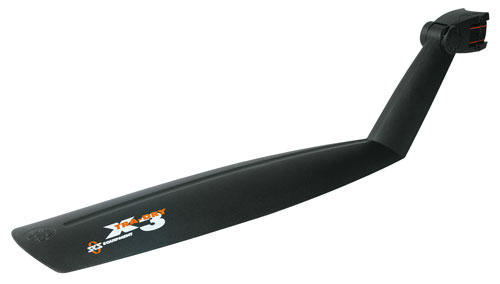
Obviously, that style of clip-on fender requires one arcane piece of equipment – a good ol’ round seatpost. While it may be possible to rig up an adapter for aero posts, I have yet to see a great execution.
The next easy winter upgrade is a set of proper brake pads. I’m a huge fan of Kool Stop, and always change out my pads for the winter. Braking simply does not feel the same at 10 degrees as it does at 100, and they have several different compounds to accommodate. I’ve found that with Kool Stop I get much less metal embedded in my pads compared to most other brands.
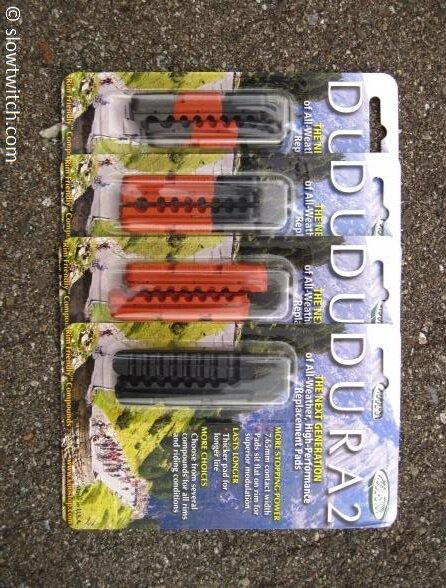
For aluminum rims and rim brakes, they have four key compounds that you should be concerned with. First is the all-black pad for dry and warm weather. Next they have the full ‘salmon’-colored pad, meant for cold and wet weather. The dual-compound pad is part salmon and part black, for the best of both worlds. Finally, the latest pad is a triple compound with salmon, black, and a gray-colored block.
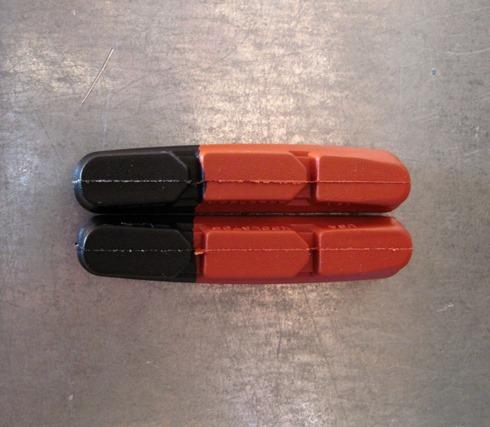
I have ridden with all of these pads. In my experience, this is the hierarchy of weakest to strongest: Black, Triple, Dual, Salmon.
The feel of the pad also highly depends on the brake setup. Some levers and calipers are very strong, and don’t require as much ‘bite’ from the pad. Some levers and calipers are relatively weak, and can be ‘supercharged’ with a good pad. For weak brake systems, I use the dual compound pad in the summer time, and the salmon in winter. For strong brake systems, I dial it back to the triple compound in the summer, and dual compound in the winter. Rim surface can also play in to this, with different amounts of ‘grabby-ness’ from different manufacturers. The good news is that pads are cheap, and can be hugely effective.
For disc brakes, I prefer organic pads over metallic, or sintered pads. While the sintered pads last longer, they tend to get noisy in wet conditions. Even with organics, it’s not uncommon to get some heavy squealing with the right amount of snow/slush/salt mix.
Hydration and Food
Food and hydration can become a little bit challenging in cold weather. The easiest thing I’ve found is to use an insulated bottle, and fill it with warm water. Additionally, drink mixes with salt will help keep the water from freezing.
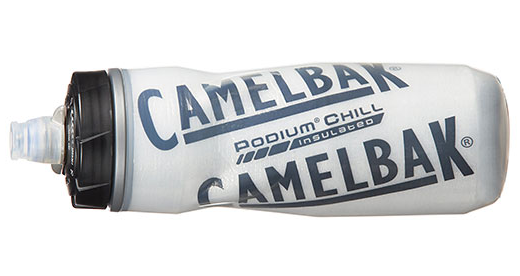
Food can be difficult, because it can be downright dangerous to take your gloves off to unwrap the packaging. I prefer to pre-wrap food items in aluminum foil, which is easy to deal with while wearing gloves. I’m generally not going for rides over two hours when it’s that cold out anyhow, so I don’t need to carry too much.
Wrap Up
Personally, I love having equipment that gets the job done in any weather. It’s not cheap, but neither are most of the fancy carbon bikes these days. I personally spend on capability over fashion, as I’d hate to wake up and think, ‘Gee, I have the time and motivation to go ride, but my equipment can’t safely handle the conditions… so I’ll skip it.’ With our busy lives today, I want to be able to grab the bike and go whenever the opportunity presents itself.
Once you have all of this equipment sorted out, what is your biggest challenge with winter riding? Finding someone to join you! Perhaps I’m a special brand of crazy, but I’ve never had a consistent winter training partner. Fat bikes are slowly becoming more common, but nobody I know has one. I can also count my number of friends that own studded tires on one hand, which is zero. Maybe I just need more friends…
Training with a group is always more fun when the weather turns sour; you have people to share the glory with. The biggest thing to understand is that, with the right equipment, you don’t have to be cold and uncomfortable. If I was actually freezing cold on training rides, I would never do it. Just bundle up, cross your fingers, and take to the streets and trails.



